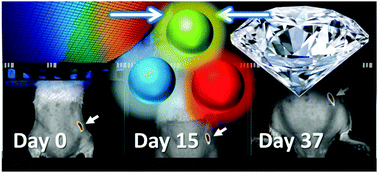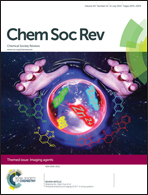Nanodiamonds and silicon quantum dots: ultrastable and biocompatible luminescent nanoprobes for long-term bioimaging
Abstract
Fluorescence bioimaging is a powerful, versatile, method for investigating, both in vivo and in vitro, the complex structures and functions of living organisms in real time and space, also using super-resolution techniques. Being poorly invasive, fluorescence bioimaging is suitable for long-term observation of biological processes. Long-term detection is partially prevented by photobleaching of organic fluorescent probes. Semiconductor quantum dots, in contrast, are ultrastable, fluorescent contrast agents detectable even at the single nanoparticle level. Emission color of quantum dots is size dependent and nanoprobes emitting in the near infrared (NIR) region are ideal for low back-ground in vivo imaging. Biocompatibility of nanoparticles, containing toxic elements, is debated. Recent safety concerns enforced the search for alternative ultrastable luminescent nanoprobes. Most recent results demonstrated that optimized silicon quantum dots (Si QDs) and fluorescent nanodiamonds (FNDs) show almost no photobleaching in a physiological environment. Moreover in vitro and in vivo toxicity studies demonstrated their unique biocompatibility. Si QDs and FNDs are hence ideal diagnostic tools and promising non-toxic vectors for the delivery of therapeutic cargos. Most relevant examples of applications of Si QDs and FNDs to long-term bioimaging are discussed in this review comparing the toxicity and the stability of different nanoprobes.

- This article is part of the themed collection: Imaging Agents

 Please wait while we load your content...
Please wait while we load your content...